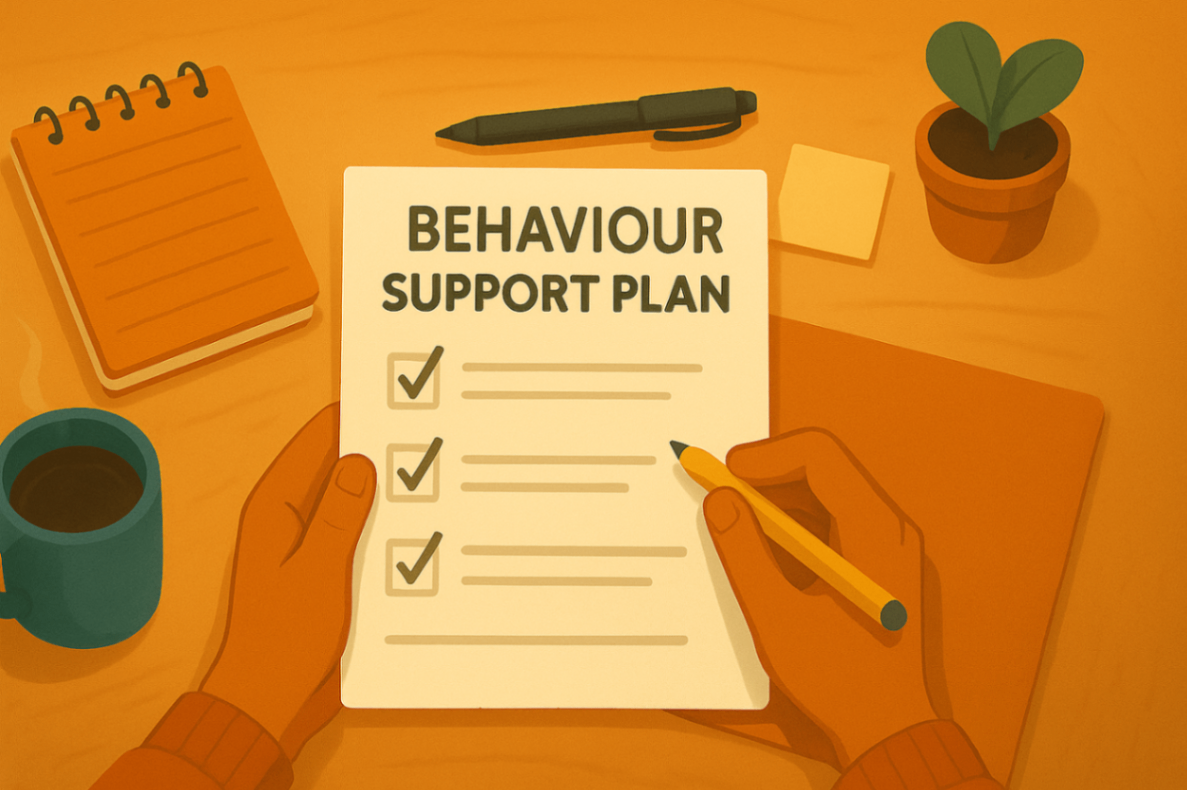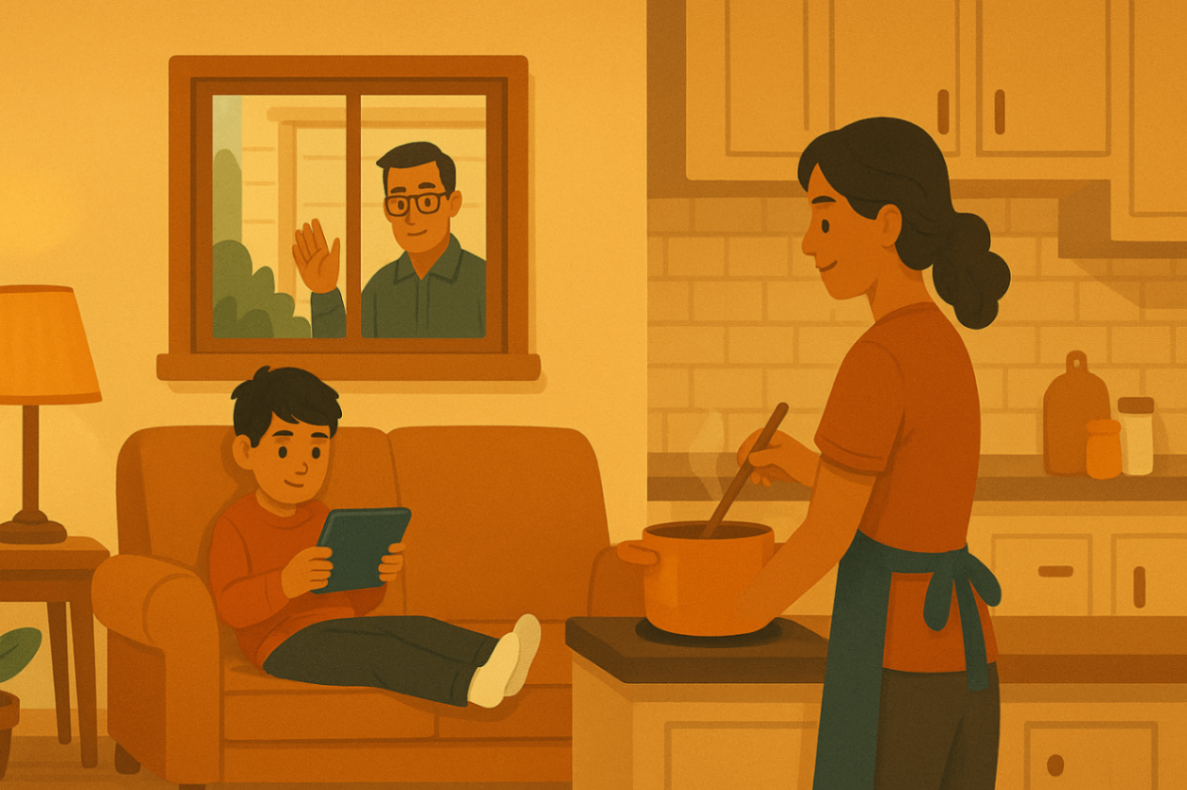
how home, school, and community shape behaviour support plans
25 June, 2025

Key Highlights
-
Behaviour support plans are structured guides designed to address challenging behaviour by teaching replacement behaviours and improving positive outcomes.
-
These plans rely heavily on functional behaviour assessments (FBA) to identify triggers, antecedents, and consequences of unwanted behaviours.
-
Individualisation and cultural sensitivity ensure plans align with health issues, family dynamics, and personal preferences.
-
Environmental factors—home, school, and community—play a key role in implementing consistent reinforcement and prevention strategies.
-
Collaboration among team members, including family members, educators, and community resources, increases the plan's success through collaborative therapy.
-
A holistic approach prioritising behaviour analysis and positive reinforcement fosters long-term improvement and constructive behaviour.
Introduction
Behaviour is shaped not just by individual traits but also by environmental factors—what’s happening at home, school, and in the community. A behaviour support plan (BSP) is a structured tool that helps manage and improve challenging behaviour using a personalised, data-driven, and holistic strategy. Whether it’s implemented in the living room, the classroom, or the community park, each environment contributes to the success of the plan.
What Are Behaviour Support Plans and How Are They Used?
 A behaviour support plan starts with understanding a person’s behaviour through assessments like the FBA. These plans are then tailored to support the individual’s needs while teaching replacement behaviours. They involve a team effort—family, educators, therapists—working toward shared goals, often within an NDIS in school setting, or through in-home sessions and community-based programs.
A behaviour support plan starts with understanding a person’s behaviour through assessments like the FBA. These plans are then tailored to support the individual’s needs while teaching replacement behaviours. They involve a team effort—family, educators, therapists—working toward shared goals, often within an NDIS in school setting, or through in-home sessions and community-based programs.
Key Components of Effective Behaviour Support Plans
A positive behaviour support plan (BSP) helps people reach positive outcomes. The first step in the behaviour support process is a functional behaviour assessment (FBA) to determine the hypothesised function of the behaviour based on the principles of applied behaviour analysis (ABA). This gives helpful details about the targeted behaviour. Data collection and monitoring are important in every positive behaviou support plan. These steps help make sure there is consistency and that decisions are based on the right information. Using positive reinforcement and encouragement makes it more likely that someone will learn new skills and show better behaviour.
It is important to use ways that are designed for each person’s needs. That way, the bsp can work better. It also helps to have family members take part in the plan. Support from family and good monitoring can give better results with time. Positive reinforcement and ongoing thought about the behaviour support plan will keep things moving in the right way.
Importance of Individualisation and Cultural Sensitivity
Making behaviour support plans that fit each person helps them work better. When you notice a person's cultural background, you get more from them and you can help set behaviours that match who they are. If you use data collection and let family members help, you are more likely to see good results and positive outcomes. This personal way helps you spot and handle unwanted behaviours. It also means prevention strategies are good for that person's culture and match what is really going on in their life.
The Role of Home Environment in Behaviour Support
 The home is the key place for good behaviour support. Family members help a lot by setting up clear routines and giving steady encouragement. They use prevention strategies to help avoid problems and keep an eye on targeted behaviour. By paying attention and doing data collection every day, they find out what causes unwanted behaviours. This helps with the functional behaviour assessment, or FBA, and shows what needs to change.
The home is the key place for good behaviour support. Family members help a lot by setting up clear routines and giving steady encouragement. They use prevention strategies to help avoid problems and keep an eye on targeted behaviour. By paying attention and doing data collection every day, they find out what causes unwanted behaviours. This helps with the functional behaviour assessment, or FBA, and shows what needs to change.
When everyone at home works to build positive skills and works on reinforcement, the whole family helps the person grow. The home gives a safe space for learning new behaviours and replacing behaviours that do not help. With this support, people with developmental disabilities can have positive outcomes and feel more successful every day.
By focusing on environmental factors at home, parents contribute to long-term positive change and better day-to-day emotional regulation.
Family Dynamics and Parental Involvement
Family members are very important when it comes to behaviour support planning. Because they know the daily routines, likes, and things that upset the child, they can help make plans that work well. If parents take part, there is more consistency. This helps everyone work together to bring out positive skills in the child.
It is important to have consistency whenever people help the child. When you keep using reinforcement often, new skills become stronger. Parents can help by noticing good changes with quick rewards, such as saying something nice when their child hits a big goal. This kind of reinforcement makes the child feel good and helps positive behaviour stick.
Also, team members need to keep talking with the family about what is happening. If both home and school use the same ways to reach goals, everyone is working together. This helps meet behaviour targets faster, and kids get better results all the time.
Strategies for Positive Behaviour Reinforcement at Home
Encouraging positive behaviour at home works best when you are consistent and use simple but strong strategies. If you set up a clear plan to give rewards, family members can see and praise positive behaviour as it happens. When you use a functional behaviour assessment (FBA), it helps you find out what things might be making challenging behaviour happen. By monitoring how often certain behaviours take place, you can start to notice some patterns. This will help you come up with new replacement behaviours that work better.
Talking often with team members, or anyone who helps at home, helps keep things clear and steady for everyone. This allows caregivers to set out what they expect in a way that is easy for others to follow. When you have this kind of consistency, you get more positive outcomes and help everyone work on learning new skills. All this helps make the environment at home safer and kinder for all family members.
How Schools Contribute to Behaviour Support Planning
Schools have a big part in making a good support plan for students. They use something called FBA, or functional behaviour assessments, to find out the reasons for hard behaviour in students. By working with family members and using data collection, teachers can make the right changes and help students learn positive skills through positive behaviour support. When everyone is consistent and uses positive reinforcement at home and at school, the support plan, or BSP, works even better. This helps students with developmental disabilities or ASD learn the right behaviours. It also helps them grow the positive skills they need in both the classroom and at home.
Teacher Collaboration and School Policies
Effective behaviour support in schools often starts with good teamwork among teachers and team members. When teachers use information from behaviour analysis in daily classroom routines, they bring consistency to how they use reinforcement. It is important to keep monitoring any changes. Also, teachers should write down each student’s progress. This helps everyone adjust the plans when needed.
School policies also play a big part in making sure behaviour interventions work. Rules that are clear help all teachers and staff use strategies the same way. This cuts down on mixed messages. Plus, giving the same kind of reinforcement for positive actions helps stop bad behaviour before it starts.
Teamwork in schools matters a lot. When teachers and their teams carry out and check on behaviour plans, they build a place where learning happens and good behaviour grows. This goes a long way in showing students how to act well every day.
Creating Inclusive Classroom Environments
Inclusive classrooms help create a space where the students feel welcome. This can lead to good behaviour support because the students learn to accept each other and take part in positive ways. Prevention strategies, like changing lesson plans so the they fit different needs and using small-group activities, help make sure interventions are right for each student.
It is important to use steady reinforcement to help students show appropriate behaviours. Teachers can, for example, reward hard work and their progress by giving clear praise during the group work. Also, having calm, quiet areas in the classroom gives students a place to go if they need to calm down.
Getting friends to help out with inclusive activities also builds understanding among the students and it lowers the chances for bad behaviour. The way included classroom runs not only helps everyone, but it also makes targeted behaviour changes more likely to be a success.
Community Influences on Behaviour Support
Many things in a community can affect how people give behaviour support. Local groups can offer help and training to family members and teachers. This support helps people work together. It also helps everyone use positive reinforcement when dealing with behaviour. When networks are supportive, they make it easier to do data collection. Supportive networks also help people share what they find when doing functional behaviour assessments (FBAs). If more people from the community take part, it is easier to spot things that have to do with culture. This means plans to deal with unwanted behaviours can be made just right for the person. If everyone in the community works together, then there is a better chance for positive outcomes when someone has challenging behaviour.
Community Resources and Support Services in Australia
Behavioural support resources in Australia offer specialised services designed to meet varying individual needs. Here’s an overview in table format:
|
Resource Name |
Key Service Description |
|---|---|
|
National Disability Insurance Scheme (NDIS) |
Financial support for tailored behaviour plans and developmental therapies. |
|
Autism Spectrum Australia |
School-based and community programs focusing on developmental disabilities and social skills training. |
|
Early Childhood Intervention |
Individualised supports for young children, enhancing critical developmental milestones. |
|
Parent Support Groups |
Collaborative communities providing emotional guidance and shared best practices for families. |
These services play a critical role in collaborative therapy, ensuring wraparound support across different environments.
Social Connections and Peer Influence
Social networks are important when it comes to helping people with their behaviour. What friends do can often affect the likelihood of problem behaviour, especially when people see their peers as role models in planned group settings. If you help people build good social connections, it can make them feel less alone and help them learn to act the right way.
Social interaction helps children practise and refine their social and emotional skills. Peer modelling, mentorship programs, and inclusive play contribute to the success of a behaviour support plan, particularly when backed by adult guidance and proactive monitoring.
Why a Holistic Approach to Behaviour Support Works Best
Bringing together different parts of a person's life helps to make a support plan work better. Looking at the whole picture means thinking about home, school, and the community. This helps build places where people can show positive behaviour. When team members think about things like developmental disabilities, health issues, and someone's culture, they can make plans that fit each person well. This way, the support plan can have better results because it matches real needs.
This plan works by using the same reinforcement all the time and by good data collection. In the end, it helps people see positive behaviour for a long time. This kind of support reaches into all areas of life and helps the person's behaviour be better and last.
Families across Liverpool and its surrounding suburbs—Casula, Lurnea, Prestons, Moorebank, Chipping Norton, Hoxton Park, Green Valley, and Miller—have access to professional behaviour support services under the NDIS. If you live in any of these areas, our team offers in-home, school-based, and telehealth options tailored to your child’s environment.
Conclusion
When home, school, and community come together under a shared behaviour plan, children are more likely to succeed. Behaviour support plans that account for environmental factors and include strategies across all settings—particularly within an NDIS in school setting—result in stronger emotional, social, and academic outcomes. Using a collaborative therapy approach ensures each child gets the personalised, respectful, and effective support they deserve.
Ready to build a behaviour plan that works across every part of your child’s life? Book your consultation now with our Liverpool clinic team and learn how we support families like yours with effective, personalised behaviour strategies.
Frequently Asked Questions
How can parents best support behaviour plans at home?
Parents can help most with behaviour plans at home by using the steps in the plan every day. They should praise good behaviour and talk often with teachers. When parents and teachers talk together about how the child is doing, it can make sure both home and school help the child in the same way. This keeps the support for behaviour strong and steady.
What role do teachers play in maintaining consistency with behaviour support?
Teachers have an important role when it comes to keeping consistency with behaviour. They use different ways given in Behaviour Support Plans to help with this. Teachers also work with families and communities so that everyone has the same expectations. This helps to make a steady place for students. When things are the same at home and at school, students can feel safe and do well in how they feel and in their school work.
How can communities contribute to positive behaviour outcomes?
Communities help create positive behaviour by offering support to people. They give resources and work on programs that include everyone. When parents, schools, and local groups work together, they all share the job of helping with behaviour. This teamwork builds consistency and strengthens positive behaviour in different places.
Are behaviour support plans different for neurodiverse children?
Yes, behaviour support plans should fit each neurodiverse child. Every child is different. Plans need to match what a child is good at and what they find hard. When you make these plans more for that child, it helps more. A plan like this will get better results in the school and at home. So, if you want positive outcomes, it is best to think about the special needs a child has. This way, the behaviour support plan can work well for them.
What are the challenges in implementing behaviour support plans across environments?
Putting behaviour support plans into action can have some problems. Many times, there are not the same strategies being used at home, school, and in the community. Staff and caregivers sometimes do not get enough training, and people often do not talk with each other about what is going on. Because of these things, it can be hard to make behaviour plans work well for people who need them.
.svg)












